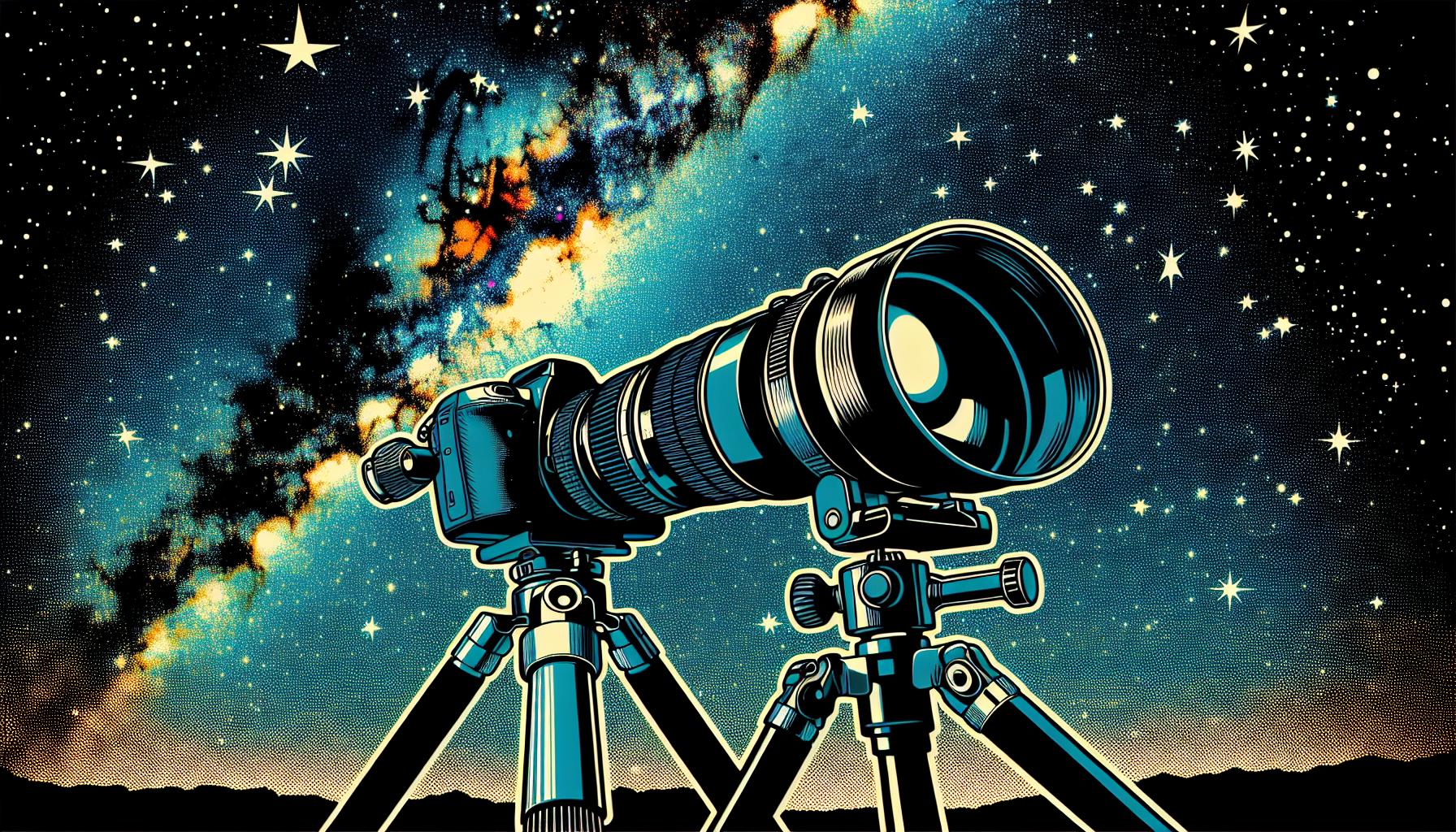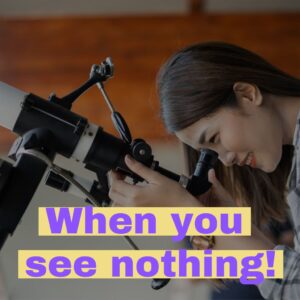This site contains affiliate links to products. I may receive a commission for purchases made through these links.
Astrophotography without a star tracker is not only possible, but it’s also a fantastic way to start your journey into capturing the cosmos. With a bit of knowledge, some patience, and your standard camera gear, you can create stunning images of the night sky.
So, let’s dive into the world of astrophotography without a star tracker. I’ll show you that capturing the stars is within your reach, and it’s easier than you might think. No fancy equipment is needed, just you, your camera, and the night sky.
Importance of star trackers in astrophotography
A star tracker, if you’re not already familiar, essentially compensates for the earth’s rotation. It allows your camera to keep pace with the movement of celestial bodies. This results in sharp, detailed images of stars and galaxies. In the absence of a star tracker, long exposure shots suffer from an effect known as ‘star trailing’, where stars appear as streaks in the image rather than sharp points of light.
One might wonder, “Why bother with a star tracker when ‘star trails’ themselves can make attractive compositions?” While this is a valid argument, it’s vital to understand that the aim of astrophotography is capturing the intricate celestial detail that a moving earth tends to blur. Star trails, though can be visually pleasing, fail to present these minutiae that a star tracker efficiently preserves.
Using a star tracker does, however, come with its learning curve. It demands an understanding of polar alignment, which ensures the tracker’s rotational axis aligns with the Earth’s. But, if success equates to the quality of your astrophotography images, each learning phase is worth it.
Challenges of astrophotography without a star tracker
When it comes to astrophotography, shooting without a star tracker can be quite a pain. You’re essentially fighting against Earth’s rotation. The rotation, while not noticeable to the naked eye, becomes very apparent in long-exposure imagery. This effect, known as star trailing, causes celestial bodies to appear as if they are moving across your shot. It leaves trails of light where sharp points of brilliance should be. While these moving stars can create unique, artistic images, they pose a challenge when the goal is to capture the intricacies of deep space.
One of the most significant issues I’ve faced when shooting without a star tracker is a loss of image quality. To make up for the lack of tracking, you might be tempted to increase the ISO or extend the exposure time. But higher ISO settings often add unwanted digital noise to a shot, and longer exposures run the risk of overexposing brighter objects like planets or the moon. These are trade-offs that can be hard to balance when you’re striving for that perfect astro shot.
The focal length of your lens can also play a tricky role in this balancing act. Wide-angle lenses tend to be forgiving, let you use longer shutter speeds without creating star trails, while longer focal lengths show star movement quicker. But without a star tracker, it’s challenging to capture detailed shots of particular celestial bodies or the brilliant stars splashed across the deep sky with a wide-angle lens.
And let’s not forget about polar alignment. Without a star tracker, polar alignment becomes next to impossible. This process is essential for pointing your camera in the celestial north or south, helping to reduce the effects of the Earth’s rotation. But without a star tracker, it’s like shooting in the dark – quite literally!
As you can see, astrophotography without a star tracker comes with its own set of challenges. Despite these trials, there’s a certain thrill in overcoming these obstacles. It’s not easy, and it’s not straightforward, but the results can be just as rewarding. And remember, you don’t need high-tech equipment to capture the beauty of the cosmos – sometimes, all you need is a little patience and perseverance.
Techniques for astrophotography without a star tracker
Astrophotography without a star tracker is indeed a challenge, but it is also a task that can yield exceptional results with the right techniques and the necessary modifications. Many factors need to be considered when trying to capture the night sky without a tracker, as the earth’s rotation can affect the final image.
Firstly, it’s paramount that a proper camera and lens setup is chosen. High ISO settings and wide-angle lenses are generally the best options for capturing as much light as possible in a short period. Remember, the wider the lens, the longer the exposure can be before star trailing becomes noticeable.
The Rule of 500 is a handy guide here. This rule states that the maximum exposure time in seconds before star trails become visible is approximately equal to 500 divided by the lens’s focal length. So for a 20mm lens, you shouldn’t go beyond 25-second exposures. It’s a good rule of thumb and provides a starting point for your exposure settings.
Next, the focus is key. In astrophotography, it’s crucial to have pinpoint focus. Auto-focus isn’t the best in low-light conditions. Therefore, manual focus should be used with the Live View function on your camera. This allows you to zoom in on a bright star and set the focus to the best possible sharpness.
One technique that can greatly improve image quality is stacking. Image stacking is a technique where multiple shorter exposure images are taken and then stacked together. This increases detail, reduces noise, and ultimately improves the quality of the final image.
Lastly, processing is critical. Use editing software such as Adobe Lightroom or Photoshop to enhance details, tweak colors, and reduce noise in your images. Learning how to edit astrophotography images effectively is just as important as the techniques you use to capture them in the first place.
Tips for capturing stunning images of the night sky
Master the manual settings on your camera. Even if you’re using a point-and-shoot camera, digging into the manual settings can give you far more control over your final product. This is where you’ll adjust your shutter speed, aperture, and ISO. Tinkering with these settings can help minimize star trails, reduce noise, and capture beautiful details in the Milky Way.
When it comes to shutter speed, remember the Rule of 500 that I mentioned earlier. Adjust your settings within this parameter to prevent trailing. As for aperture, aim for the largest your lens can handle, usually between f/2.8 and f/4. Finally, set the ISO between 1600 and 3200 for a good balance between detail and noise.
Use a sturdy tripod and remote. Image stability is paramount when shooting the night sky. Every tiny vibration can lead to blurriness in your final shot. A sturdy tripod can help reduce shake, while a remote control enables you to capture shots without physically touching your camera.
Capture RAW images only. Yes, RAW files are larger, but they’re worth it. You capture more data in a RAW file, which can be a godsend when it comes to image processing later on.
Shoot plenty of images. You might think you’ve nailed a perfect shot on the first try, but odds are, you’ll want backup options. Plus, shooting in continuous mode can give your image-stacking software more to work with, and a higher chance of eliminating pesky noise.
Use your Live View for sharp focus. The auto-focus function on your camera will likely leave you disappointed when aiming at the endless expanse of the night sky. Manual focus paired with your camera’s Live View can give you a crisp, pinpoint shot.
Conclusion
So, you’ve seen it’s possible to capture breathtaking astrophotography without a star tracker. Mastering manual camera settings, utilizing a sturdy tripod and remote control, and embracing the power of RAW images all play a crucial role in this process. Shooting multiple images not only gives you backup but also opens the door to image stacking. Manual focus and Live View can be your best friends for achieving sharp focus.
Remember, it’s not always about having the most expensive gear. It’s about making the most of what you’ve got. Now, armed with these tips, I’m confident you’ll be capturing stunning images of the night sky in no time. Happy shooting!
Don’t forget to subscribe to our newsletter where you’ll find the latest cosmic discoveries, expert stargazing tips, and exclusive subscriber deals. Embark on your cosmic journey if you haven’t already!
You may also like:



